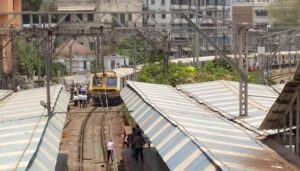Soaring Heat Causes Power Outages in Maharashtra’s Thane and Navi Mumbai

Navi Mumbai, 18th April 2024: The soaring summer heat led to high electricity demand in Maharashtra, causing the Kalwa circuit of Maharashtra State Electricity Transmission Co. Ltd. (Mahatransco) to overload and resulting in power outages lasting up to two hours.
Affected areas included parts of Thane, such as Naupada, Pachpakhadi, Vikas Complex, Majiwada, and Talao Pali, as well as regions in Navi Mumbai like Vashi and Mahape.
As demand surged to 3,900 MW in Mumbai, Mahatransco activated a load reduction strategy at 2:25 pm to manage the overloading of the high-tension voltage 400 kV Padghe Kalwa circuit 1. Several substations in the Mumbai Metropolitan Region (MMR) were impacted, and power was gradually restored over the course of a couple of hours.
Power was returned in phases, including at the Vashi substation at 4:05 pm, Colourchem substation at 4:08 pm, Mahape substation at 3:55 pm, and Temghar substation at around 4:15 pm.
Dr. Milind Awatade, Mahatransco’s public relations officer, explained that 160 MW of electricity was regulated in Thane, Kalwa, Vashi, Colorchem, Mahape, and Temghar to manage excessive load.
“We were prepared for the high demand as there had been warnings about elevated temperatures in the region,” said Awatade. “However, a sudden surge in demand up to 3,900 MW in Mumbai and its surrounding areas in the afternoon caused the situation.”
Residents expressed frustration with the power cuts, particularly given the early onset of summer. Shilpa Patil, a Vashi resident, said the lack of power made life difficult for her and her children, while Vasai resident Kamla Garia noted the impact of irregular power supply on her children’s ability to study.
In areas like Airoli, the loss of power even caused residents to take to the streets. Similarly, the Vasai-Virar region faced ongoing unscheduled power cuts for about a week, causing significant inconvenience for locals.
Residents expressed concern about the effect of the ongoing power disruptions, citing challenges with high electricity bills, drained inverter batteries, and difficulties coping without cooling systems in the extreme heat.






